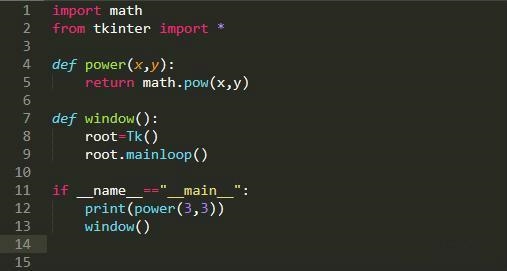 源码分析"/>
源码分析"/>
VS2010 std::string 源码分析
分配内存原理分配内存原理
union _Bxty
{ // storage for small buffer or pointer to larger one_Elem _Buf[_BUF_SIZE];_Elem *_Ptr;char _Alias[_BUF_SIZE]; // to permit aliasing
} _Bx;这个_Bxty是一个union。当分配字符串所需内存小于_BUF_SIZE,_Buf存放我们的字符串,当然也不一定是字符串,也可以放int数组这种东西。当分配内存大于_BUF_SIZE,_Ptr由内存分配器_ALLOCATOR分配,然后存放我们的字符串。
类构成关系
typedef basic_string<char, char_traits<char>, allocator<char> > string;
template<class _Elem>struct char_traits: public _Char_traits<_Elem, long>{ // properties of a string or stream unknown element};xmemory文件:
#define _ALLOCATOR allocator
template<class _Ty>class _ALLOCATOR: public _Allocator_base<_Ty>{ // generic allocator for objects of class _Ty
...
} // TEMPLATE CLASS basic_string
template<class _Elem,class _Traits,class _Ax>class basic_string: public _String_val<_Elem, _Ax>{ // null-terminated transparent array of elements
...
} // TEMPLATE CLASS _String_val
template<class _Elem,class _Alloc>class _String_val: public _Container_base{ // base class for basic_string to hold data
...union _Bxty{ // storage for small buffer or pointer to larger one_Elem _Buf[_BUF_SIZE];_Elem *_Ptr;char _Alias[_BUF_SIZE]; // to permit aliasing} _Bx;size_type _Mysize; // current length of stringsize_type _Myres; // current storage reserved for string_Alty _Alval; // allocator object for strings
}typedef _Container_base12 _Container_base;
struct _CRTIMP2_PURE _Container_base12{ // store pointer to _Container_proxy
...
}从实例构造说起
string str5("abcdefghijklmn12345");string str("abc");str = "abcdefghijklmn12345"; basic_string(const _Elem *_Ptr): _Mybase(){ // construct from [_Ptr, <null>)_Tidy();assign(_Ptr);}_String_val(_Alty _Al = _Alty()): _Alval(_Al){ // construct allocator from _Altypename _Alloc::template rebind<_Container_proxy>::other_Alproxy(_Alval);this->_Myproxy = _Alproxy.allocate(1);_Cons_val(_Alproxy, this->_Myproxy, _Container_proxy());this->_Myproxy->_Mycont = this;}上面这一大堆就是stl里面公用的那一套机制。暂且不表。
void _Tidy(bool _Built = false,size_type _Newsize = 0){ // initialize buffer, deallocating any storageif (!_Built);else if (this->_BUF_SIZE <= this->_Myres){ // copy any leftovers to small buffer and deallocate_Elem *_Ptr = this->_Bx._Ptr;if (0 < _Newsize)_Traits::copy(this->_Bx._Buf, _Ptr, _Newsize);this->_Alval.deallocate(_Ptr, this->_Myres + 1);}this->_Myres = this->_BUF_SIZE - 1;_Eos(_Newsize);}其实我一直在想stl里面的_Tidy函数到底干啥的。tidy这个单词有整洁的,整齐的,使整洁,使整齐,整理之意。那这里呢。看这句注释// initialize buffer, deallocating any storage 意思大概是初始化内存,这里用的buffer,即缓存,反正也是内存吧,然后释放所有的存储。来具体看看代码。_Built这参数的含义应该就是是否使用了堆内存机制,即是否使用了this->_Bx._Ptr。若是使用了,就把堆内存考到栈内存this->_Bx._Buf,再把堆内存释放掉,当然了,刚构造一个basic_string的时候,肯定还未使用堆内存机制,无论用于初始化的字符串有多长。this->_Myres是说当前保留了几个字节可以用来分配内存,当然还有一个字节用来保存0。然后把_Newsize处置0。
_Myt& assign(const _Elem *_Ptr, size_type _Count){ // assign [_Ptr, _Ptr + _Count)if (_Inside(_Ptr))return (assign(*this, _Ptr - _Myptr(), _Count)); // substringif (_Grow(_Count)){ // make room and assign new stuff_Traits::copy(_Myptr(), _Ptr, _Count);_Eos(_Count);}return (*this);}这里_Inside得false,后面可以讨论得true的情况。
bool _Grow(size_type _Newsize, bool _Trim = false)
{ // ensure buffer is big enough, trim to size if _Trim is true
if (max_size() < _Newsize)//情况①:这种情况崩溃,分配字符数太大了。_Xlen(); // result too long
if (this->_Myres < _Newsize)//情况②:要分配的大于能够为字符串提供内存大小,重新分配内存_Copy(_Newsize, this->_Mysize); // reallocate to grow
else if (_Trim && _Newsize < this->_BUF_SIZE)//情况③:砍掉不要的字符串,只有栈内存机制可行_Tidy(true, // copy and deallocate if trimming to small string_Newsize < this->_Mysize ? _Newsize : this->_Mysize);
else if (_Newsize == 0)//情况④_Eos(0); // new size is zero, just null terminate
return (0 < _Newsize); // return true only if more work to do情况⑤:当然是不需要分配就够了,
//比如本来”abc”,现在”abcde”,没超过16字节,依旧栈内存机制,无需再分配内存。
}着重讲一下情况②:
void _Copy(size_type _Newsize, size_type _Oldlen){ // copy _Oldlen elements to newly allocated buffersize_type _Newres = _Newsize | this->_ALLOC_MASK;if (max_size() < _Newres)//情况①_Newres = _Newsize; // undo roundup if too bigelse if (this->_Myres / 2 <= _Newres / 3)//情况②;else if (this->_Myres <= max_size() - this->_Myres / 2)//情况③_Newres = this->_Myres+ this->_Myres / 2; // grow exponentially if possibleelse//情况④_Newres = max_size(); // settle for max_size()_Elem *_Ptr;_TRY_BEGIN_Ptr = this->_Alval.allocate(_Newres + 1);_CATCH_ALL_Newres = _Newsize; // allocation failed, undo roundup and retry_TRY_BEGIN_Ptr = this->_Alval.allocate(_Newres + 1);_CATCH_ALL_Tidy(true); // failed again, discard storage and reraise_RERAISE;_CATCH_END_CATCH_ENDif (0 < _Oldlen)_Traits::copy(_Ptr, _Myptr(), _Oldlen); // copy existing elements_Tidy(true);this->_Bx._Ptr = _Ptr;this->_Myres = _Newres;_Eos(_Oldlen);}string str5("abcdefghijklmn12345");这句话会调用到上面这个函数,那么_Newsize为19,毕竟"abcdefghijklmn12345"是有19个字符。_Oldlen为0。大概有这么几种情况,会调用这个函数:
- 刚初始化的时候,字符占字节数超过_BUF_SIZE;
- 刚初始化,字符占字节数不超过_BUF_SIZE,后来重新赋值的字符串占字节数超过_BUF_SIZE;
- 刚初始化,字符占字节数超过_BUF_SIZE为sizeA,后来重新赋值的字符串占字节数sizeB超过sizeA;
这个函数叫做_Copy,意思就是把之前内存字符串拷贝到现在内存处,如果之前有分配内存,比如上面情况1,2,现内存是从新分配的,现内存大小取值由上面标注四种情况,情况②④不太理解,暂时不表。反正重新分配了内存,拷贝内存,_Tidy(true)把栈内存置null。然后修改_Bx._Ptr与_Myres,然后_Eos(_Oldlen)置null,这里是_Oldlen,毕竟还没有把现字符串赋值进来。
回到assign函数。现在_Grow调用成功后,有下面两句。
_Traits::copy(_Myptr(), _Ptr, _Count);
_Eos(_Count);
这两句也简单。不过我在想,_Grow里面调用了_Copy,把之前内存拷到现内存,现在又把当前字符串赋值到现内存,那么把原先字符串拷到现内存是不是就多此一举了。
其他一些组件
迭代器
// TEMPLATE CLASS _String_const_iterator
template<class _Elem,class _Traits,class _Alloc>class _String_const_iterator: public _Iterator012<random_access_iterator_tag,typename _Alloc::value_type,typename _Alloc::difference_type,typename _Alloc::const_pointer,typename _Alloc::const_reference,_Iterator_base>{ // iterator for nonmutable string
public:typedef _String_const_iterator<_Elem, _Traits, _Alloc> _Myiter;typedef basic_string<_Elem, _Traits, _Alloc> _Mystr;typedef random_access_iterator_tag iterator_category;typedef typename _Alloc::value_type value_type;typedef typename _Alloc::difference_type difference_type;typedef typename _Alloc::const_pointer pointer;typedef typename _Alloc::const_reference reference;_String_const_iterator(pointer _Parg, const _Container_base *_Pstring){ // construct with pointer _Pargthis->_Adopt(_Pstring);this->_Ptr = _Parg;}
...//这里无非一些 operator*,->,++,--之类的东西。
pointer _Ptr; // pointer to element in string
};
template<class _Elem,class _Traits,class _Alloc>class _String_iterator: public _String_const_iterator<_Elem, _Traits, _Alloc>{ // iterator for mutable string
...
}字符特性Traits
iosfwd文件:
template<class _Elem,class _Int_type>struct _Char_traits{ // properties of a string or stream element
...//这里面一些compare,length,copy,find,move函数
}// TEMPLATE STRUCT char_traits
template<class _Elem>struct char_traits: public _Char_traits<_Elem, long>{ // properties of a string or stream unknown element
...};
template<>struct char_traits<wchar_t>{ // properties of a string or stream wchar_t element
...
}
template<> struct char_traits<unsigned short>{ // properties of a string or stream unsigned short element
...
}
template<> struct char_traits<char>{ // properties of a string or stream char element
...
}其他一些重要函数
_Elem *_Myptr()
{ // determine current pointer to buffer for mutable string
return (this->_BUF_SIZE <= this->_Myres ? this->_Bx._Ptr: this->_Bx._Buf);
}这个函数就是返回到底是栈内存还是堆内存。
_Myt& append(const _Myt& _Right,size_type _Roff,size_type _Count)//_Roff从第几个字符开始复制
{ // append _Right [_Roff, _Roff + _Count)if (_Right.size() < _Roff) //一共三个字符,你却从第四个开始复制,over_Xran(); // _Roff off endsize_type _Num = _Right.size() - _Roff;if (_Num < _Count)_Count = _Num; // trim _Count to sizeif (npos - this->_Mysize <= _Count)//npos为(size_type)(-1),判断是否复制后超过最大字符数_Xlen(); // result too longif (0 < _Count && _Grow(_Num = this->_Mysize + _Count))//增长内存(_Grow里面判断是否真的需要增){ // make room and append new stuff //把_Right字符串复制到本字符串尾端_Traits::copy(_Myptr() + this->_Mysize,_Right._Myptr() + _Roff, _Count);_Eos(_Num);}return (*this);
} #define _STRING_ITERATOR(ptr) iterator(ptr, this)iterator begin(){ // return iterator for beginning of mutable sequencereturn (_STRING_ITERATOR(_Myptr()));}返回一个_String_iterator变量。
const _Elem *c_str() const{ // return pointer to null-terminated nonmutable arrayreturn (_Myptr());}返回保存字符串的内存的地址,栈内存或堆内存。
void clear(){ // erase all_Eos(0);}这里并没有释放内存,只是把第一个字符置null。
_Myt& erase(size_type _Off = 0,size_type _Count = npos){ // erase elements [_Off, _Off + _Count)if (this->_Mysize < _Off)_Xran(); // _Off off endif (this->_Mysize - _Off < _Count)_Count = this->_Mysize - _Off; // trim _Countif (0 < _Count){ // move elements down_Traits::move(_Myptr() + _Off, _Myptr() + _Off + _Count,this->_Mysize - _Off - _Count);size_type _Newsize = this->_Mysize - _Count;_Eos(_Newsize);}return (*this);}
更多推荐
VS2010 std::string 源码分析












发布评论